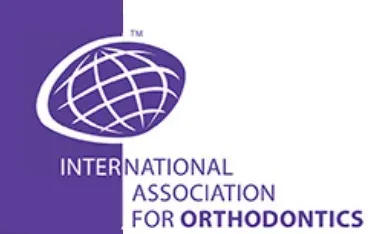September’s Tip

The Utility Arch, Part III
By Dr. Adrian J. Palencar, MUDr, MAGD, IBO, FADI, FPFA, FICD
September 2023
Utility Arches with activation in the sagittal plane
1. Intrusive – Protrusive, after the Passive Utility Arch is fabricated, it should be inserted into the maxillary or mandibular tubes, to evaluate the parallelism and the tip of the molars. The 30° – 45° tip-back (gable bend, “V” pointing occlusally) in front of the molar tubes precipitates:
- Small intrusion and labial moment (proclination, flaring) on the incisors
- Large extrusion and distal moment (tipping) on the molars, this renders the dental arch longer, therefore, there should be left 3 – 4 mm arch wire distally to the molar tubes, followed by the annealing and bend-back (cinch).
Also, there should be about 15° – 20° toe-in bent in front of the maxillary molar tubes (not in the mandible), to disto-rotate the molars and add slight buccal moment (torque). The amount of the applied force should be measured with the Gram gage (do not exceed 70 grams).
2. Intrusive – Retrusive, the bends are the same. However, follow the protocol of the Retrusive Utility arch in the August IAO Monthly Tip.


Orthodontic practitioners, in general, have a proclivity to correct deep dental overbite by intrusion of maxillary anterior teeth. This protocol is seldom required, unless there is gummy smile, short upper lip, upper lip hyper mobility or vertical maxillary dento-alveolar excess. Norm for maxillary tooth display (particularly in younger patients) is:
- Lips in repose, 3 – 5 mm
- Posed smile, 1 – 2 mm gingival display just above the maxillary central incisors.
Overlooking these norms, the clinician will prematurely age the patient. Maxillary lip will drop in average 1.0 mm per decade starting around the age of 40.
Therefore, if the maxillary anterior tooth display is within the norm and is pleasing, the best avenues to correct the dental deep overbite are:
- Hypo-divergent and Normo-divergent cases – elevation of the mandibular posterior sextants
- Hyper-divergent cases, intrusion of the mandibular anterior teeth.

References:
- Rondeau Seminars, Level I, Session 3; 136 – 161
- Journal of Clinical Orthodontics, Volume LVI, Number 12; 716 – 724
- Palencar A. J., Case Finishing and Mechanics, 152 – 156
- Palencar A. J., Personal PP presentetions
HABLA ESPAÑOL
PARLE FRANÇAIS
